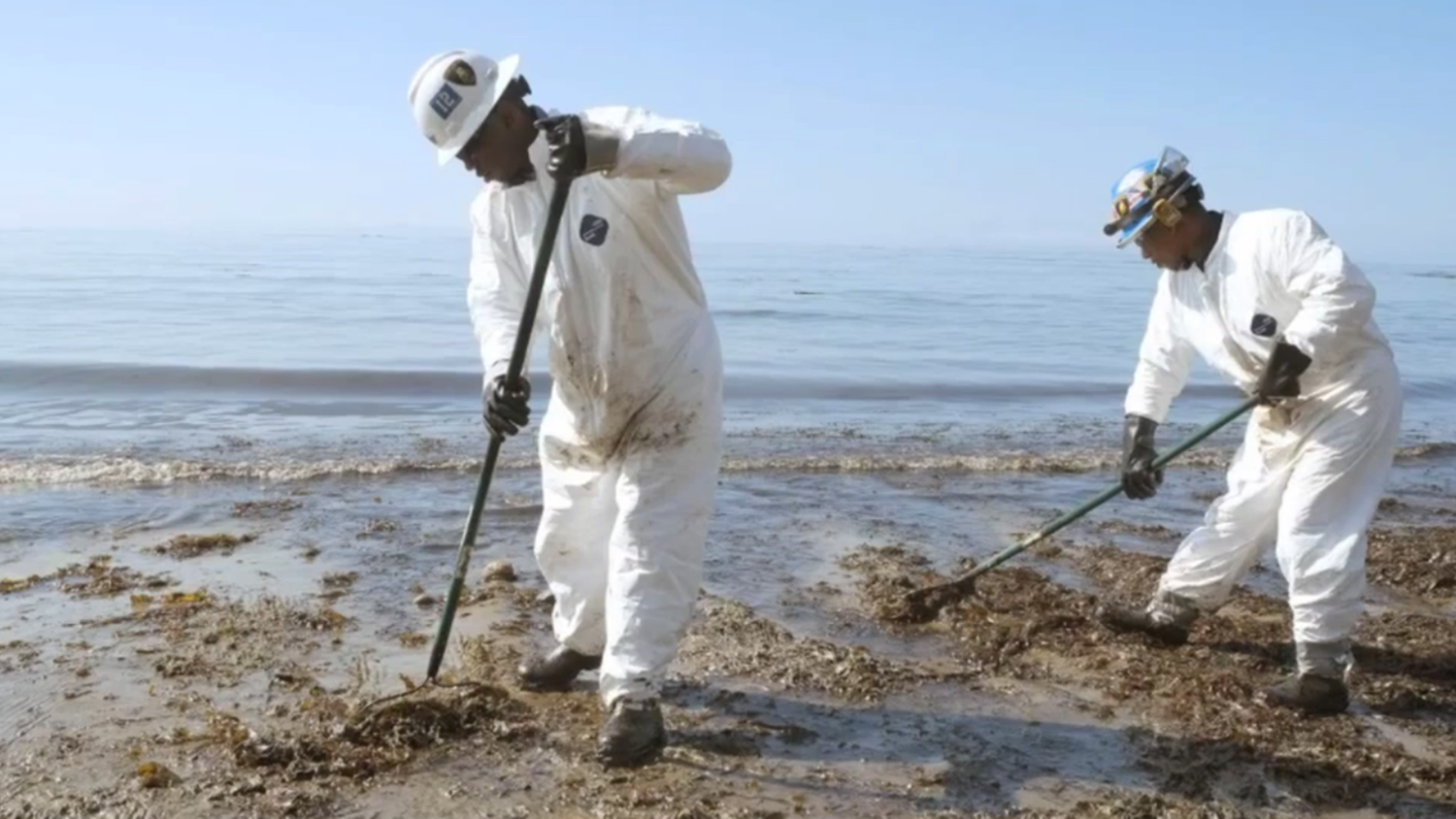Early on Tuesday, an 11-mile-long underground pipe owned by a company with the very patriotic name of Plains All American Pipeline spilled about 105,000 gallons of crude onto the coastline of northern Santa Barbara County, just a few miles north of the town of Santa Barbara.
When cleanup began, and the spill was thought to be closer to 21,000 gallons, Coast Guard described it to the LA Times, as “medium” in size. Maybe they’re just jaded. In general, the U.S. sees about 100 “significant” oil spills a year. To a cleanup crew, this is just another one of them.
But this spill has a history, because it happened not far from the Santa Barbara oil spill of 1969, also known as one of the most famous oil spills ever. That disaster, caused by a leak in an offshore drilling platform, spewed an estimated 4 million gallons of oil into the Pacific Ocean. At the time, it was the largest in America, and it was a major factor in the creation of the National Environmental Policy Act (NEPA), the EPA, the Clean Water Act, and the California Coastal Commission.
When we’re lucky, America’s biggest environmental victories come after something horrible happens — they’re the silver linings in some very large, sticky clouds. For instance, the Exxon Valdez led to the Oil Pollution Act of 1990 and the Oil Spill Liability Trust Fund. Of course, we’re not always lucky. The Deepwater Horizon led to… well, not much, except for a lot of litigation. The Kalamazoo River dilbit spill? Lots of penalties, but not much achieved in the way of preventing such spills in the future.
Could a “significant” oil spill near several beautiful state beaches (and right before Memorial Day) be the thing that finally leads to serious legislative change? Because there’s a lot about the way that the U.S. handles its oil infrastructure that is ripe for change.
What’s especially ripe these days? For your enjoyment, a short list.
The Pipeline and Hazardous Materials Safety Administration (PHMSA):
Maybe it’s the acronym, which is terrible, or the fact that it’s just a little over a decade old. Whatever the reason, PHMSA is a tiny little governmental agency that is undeservedly obscure in environmental circles, because it punches way above its weight in terms of neglect.
A federal investigation found that PHMSA’s weak regulations were a key factor in the disastrous spill of tar-sands crude in the Kalamazoo River five years ago, which remains the largest inland oil spill in American history. It’s possible that PHMSA could have prevented this spill too by being tougher on enforcement — according to PHMSA’s own records, Plains All-American had the fifth-highest rate of safety and maintenance infractions in the country.
PHMSA has dragged its feet in writing new legislation, even when directly ordered to do so by Congress. It’s way too charitable to pipeline safety offenders — a Politico investigation found that the agency has levied just $44.2 million in fines against pipeline operators that caused more than $5.5 billion in damage. Its former administrator, Cynthia Quarterman, was controversial for having been employed by the pipeline company Enbridge before her appointment; since she stepped down last October, no one has been appointed to replace her. Now is the perfect time to get someone in there who can actually make pipeline safety happen.
Oil spill detection and response
While pipeline companies have leak detection systems, they often fail to work properly, or send off false alarms so often that operators ignore them. This leak seems to have played out the same way — it was reported by a woman walking on Refugio Beach, who noticed that the air smelled like a gas station and started making phone calls. It took three hours for the authorities to trace the oil spill back to its source and then get Plains All American to shut off the flow to the pipeline. By then, the spill had formed an oil slick about four miles wide. (It has since split into two oil slicks, covering 9 miles of coastline.)
We need to embiggen the Oil Spill Liability Trust Fund
The fact that tar-sands crude is exempt from the Oil Spill Liability Trust Fund has never made much sense. When tar-sands crude spills, it spills just like regular oil does. It’s even more expensive to clean up — and the OSLTF winds up paying for immediate response, anyway. The oil that spilled in Santa Barbara was presumably the conventional variety. But if we want to keep the fund that pays for the early responders solvent, all the oil out there ought to be paying its fair share.



